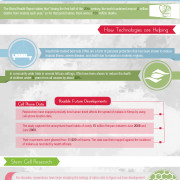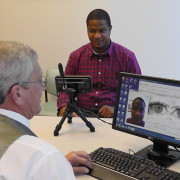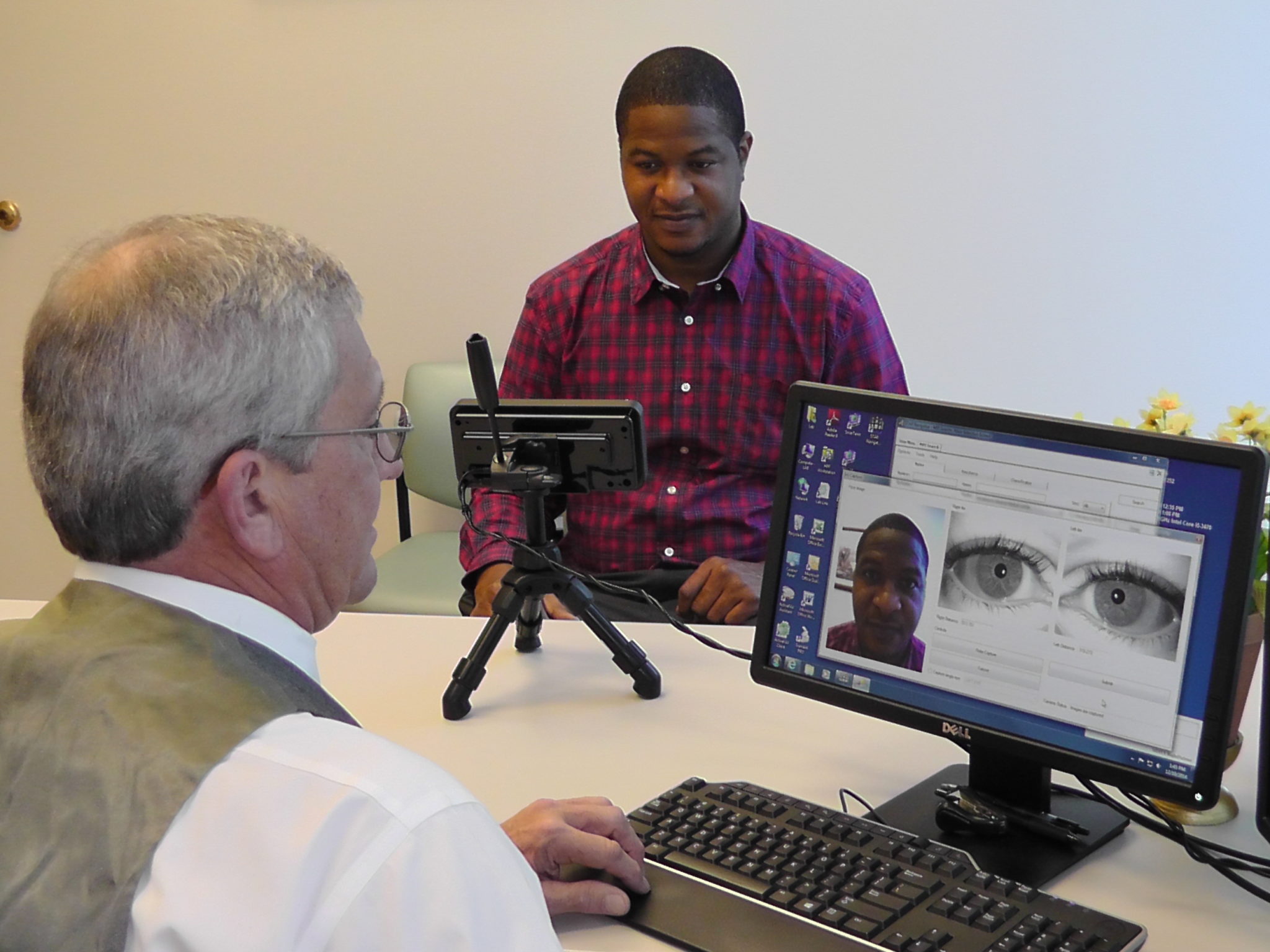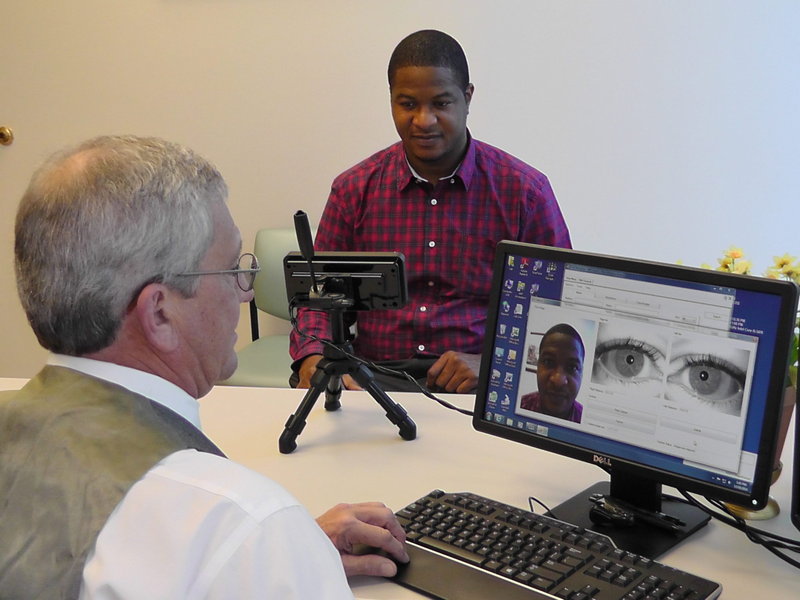Lessons Learned at this Year’s HFMA ANI Conference


Although the use of biometrics for patient ID is not a new concept, many are still unaware of its benefits.
The following post on patient identification in healthcare was submitted by Jeremy Floyd, Healthcare Director at RightPatient®
We were excited at the chance to again participate in the Healthcare Financial Management (HFMA) trade show held this week at the Orange County Convention Center in Orlando. Attendance was brisk, the exhibit hall was packed with vendors displaying the latest technological health IT solutions, and attendees were excited to learn and explore for new opportunities to improve revenue cycle management, coding, and business analytics. As is the case with all conferences and trade shows the RightPatient staff attends each year, we approached the event as a means to learn more about the unique needs of hospital CFO’s, revenue cycle managers, and all those who have a hand in healthcare finance, plus have a chance to demonstrate our own products and services as part of a concerted strategy to improve patient identification in healthcare and to address all of the ancillary conditions that lack of an accurate patient ID strategy can bring to the industry. Here is a recap of what we learned:
1. Despite the fact that using biometrics for patient identification is not a new concept, many still do not know or understand it’s benefits: Perhaps the biggest surprise for us at this year’s HFMA ANI annual conference was the number of CFOs and Revenue Cycle Managers that we spoke with who are still unclear or unaware of the benefits that using biometrics for patient identification can offer healthcare organizations. We talked extensively on this blog about how biometric patient identification positively impacts healthcare information management, how and why patient identification technology should prevent medical identity theft at the point of enrollment, the ability of iris biometrics to identify unconscious patients and how important accurate patient identification is along the care continuum.
The benefits of deploying biometrics for patient identification resonate well beyond patient safety, and include a direct impact on revenue cycles and billing. Many of our existing customers have already seen a direct correlation between accurate patient identification and the revenue cycle, demonstrated in their ability to more accurately bill for services rendered, and offer a concrete audit trail of services provided in cases of dispute.
2. Many still feel that patients will not accept or participate in a biometric identification initiative: As we recently outlined in a blog post, our field research indicates that over 99% of patients accept the use of iris biometrics for identification and willingly enroll in the RightPatient system after they understand what it is being used for, how it protects their safety and privacy, and the protection if offers against medical identity theft and healthcare fraud. Patients do understand the use of biometrics for identification, contrary to popular belief that the technology will be only tepidly accepted.
3. Experience matters: Several people we spoke with at this year’s HFMA ANI show indicated their unwillingness to adopt biometrics for patient identification from a vendor with a short track record, an absence of real world experience in biometric technology, and a customer base that doesn’t include large hospital networks with complicated infrastructures and a wide network. Fortunately, RightPatient has this experience and a deep customer base of both large and small healthcare networks, a platform that already has pre-built versions compatible with all the major EHR providers (Epic, McKesson, CPSI, Meditech, and Cerner®). Plus we offer additional benefits to our biometric patient identification solution such as:
- A HIPAA compliant SaaS cloud service designed to create a single, ubiquitous, federated patient identity
- A seamless interface with IBM’s Initiate® platform to assign a unique, single patient identity profile across an Enterprise Master Patient Index (EMPI) kept authentic through our biometric matching system
- The ability to secure remote personal health information (PHI) data access to safeguard patient privacy and help prevent data breaches that can lead to fraud and medical ID theft
- A portable, ergonomic mobile biometric patient identification device to provide convenience and portability when identifying patients bedside, in home health, or in special cases within the emergency department.
We had a very positive experience at this year’s HFMA ANI conference and would like to thank the HFMA staff and all attendees we met for helping us to continue our mission of bringing biometrics for patient identification to more healthcare organizations throughout the world!
 Jeremy has worked in the biometrics industry for nearly a decade and has real world experience with fingerprint, palm vein, finger vein, iris and face recognition technologies. He currently oversees the RightPatient™ Healthcare division of M2SYS Technology, including sales, business development and project management. Before taking over the Healthcare unit, Jeremy spearheaded the growth of the core biometrics division, working closely with Fortune 500 clients like ADP, JP Morgan & BAE Systems to implement biometrics in large identity management projects.
Jeremy has worked in the biometrics industry for nearly a decade and has real world experience with fingerprint, palm vein, finger vein, iris and face recognition technologies. He currently oversees the RightPatient™ Healthcare division of M2SYS Technology, including sales, business development and project management. Before taking over the Healthcare unit, Jeremy spearheaded the growth of the core biometrics division, working closely with Fortune 500 clients like ADP, JP Morgan & BAE Systems to implement biometrics in large identity management projects.








